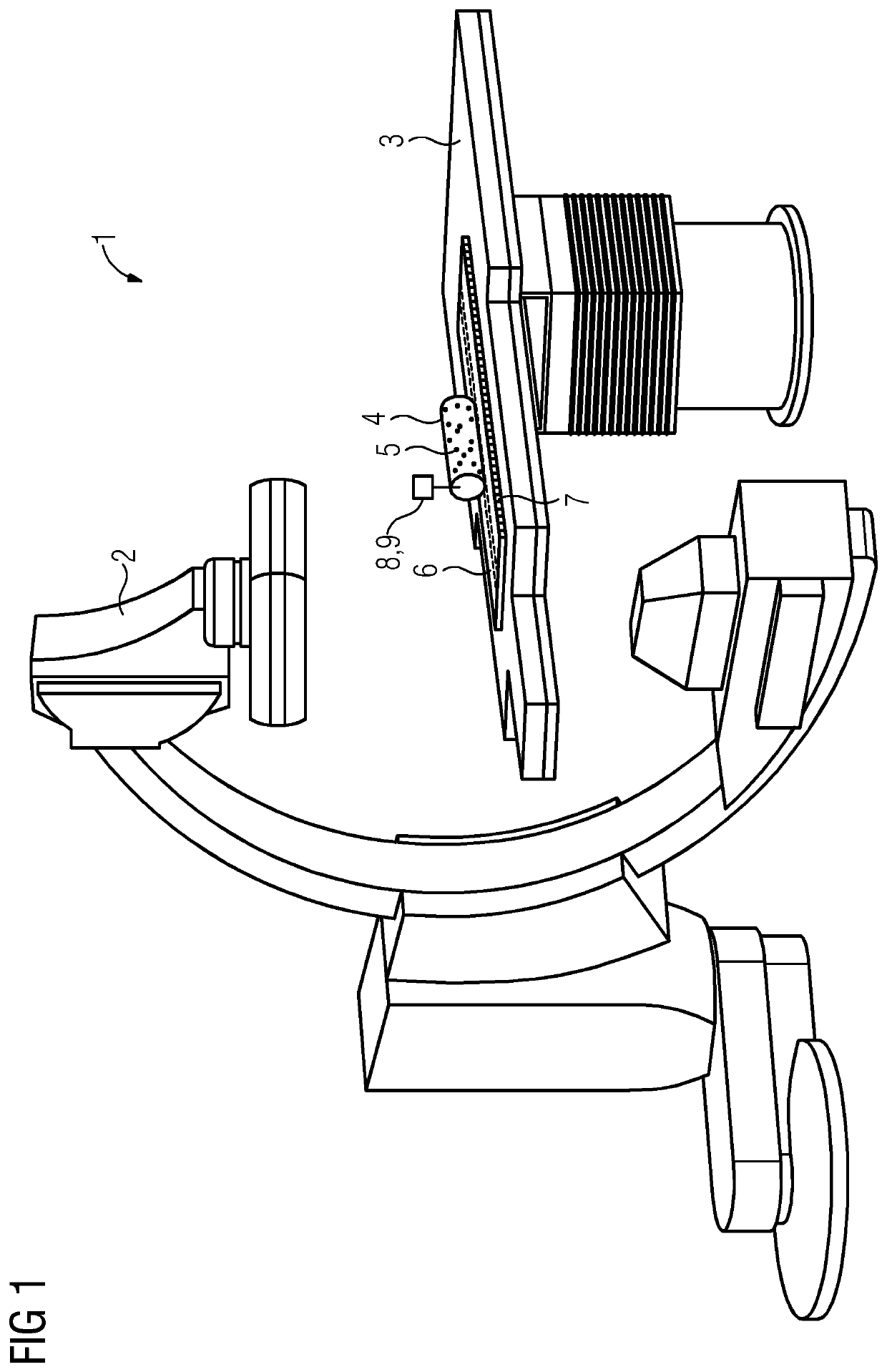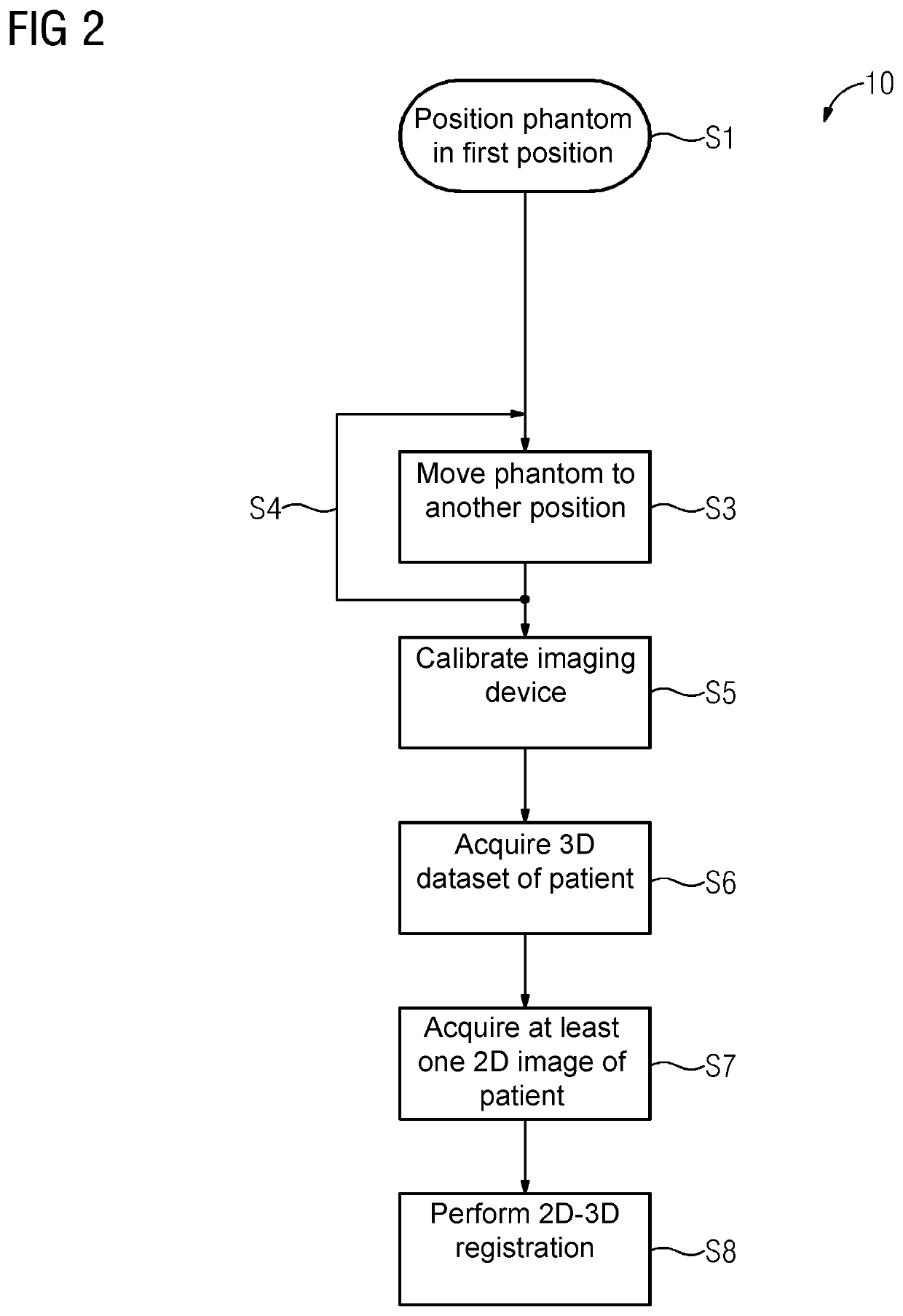Method for calibrating a medical imaging device, method for performing a 2D-3D registration, and system including a medical imaging device
a medical imaging and registration technology, applied in the field of two-dimensional (2d)three-dimensional (3d) registration, can solve the problems of less-than-ideal overall precision, possible only to accurately register with reasonable effort, and expose patients to significant radiation, etc., to achieve simple implementation or application, extend the size of the calibration space, and be relatively inexpensive.
- Summary
- Abstract
- Description
- Claims
- Application Information
AI Technical Summary
Benefits of technology
Problems solved by technology
Method used
Image
Examples
Embodiment Construction
[0038]FIG. 1 schematically shows one embodiment of a system 1 including a medical imaging device 2 that, in the present example, is a c-arm x-ray device. The system 1 or the imaging device 2, respectively, further includes a patient support 3 that is adjustable. Placed on the patient support 2 is an imaging phantom 4 in the form of a cylindrical object including multiple x-ray-visible markers 5 arranged in a pattern to uniquely or unambiguously identify a pose of the phantom 4 in or from x-ray images or corresponding image data obtained using the imaging device 2. Because a geometry of the phantom 4 and the pattern of markers 5 is predetermined and known, the phantom 4 may be used to calibrate the imaging device 2. A corresponding method for calibrating the imaging device 2 will be described with reference to FIG. 2, which schematically shows an exemplary flow chart 10, illustrating multiple process acts.
[0039]The method starts with a process act S1, where the phantom 4 is positione...
PUM
 Login to View More
Login to View More Abstract
Description
Claims
Application Information
 Login to View More
Login to View More - R&D
- Intellectual Property
- Life Sciences
- Materials
- Tech Scout
- Unparalleled Data Quality
- Higher Quality Content
- 60% Fewer Hallucinations
Browse by: Latest US Patents, China's latest patents, Technical Efficacy Thesaurus, Application Domain, Technology Topic, Popular Technical Reports.
© 2025 PatSnap. All rights reserved.Legal|Privacy policy|Modern Slavery Act Transparency Statement|Sitemap|About US| Contact US: help@patsnap.com


